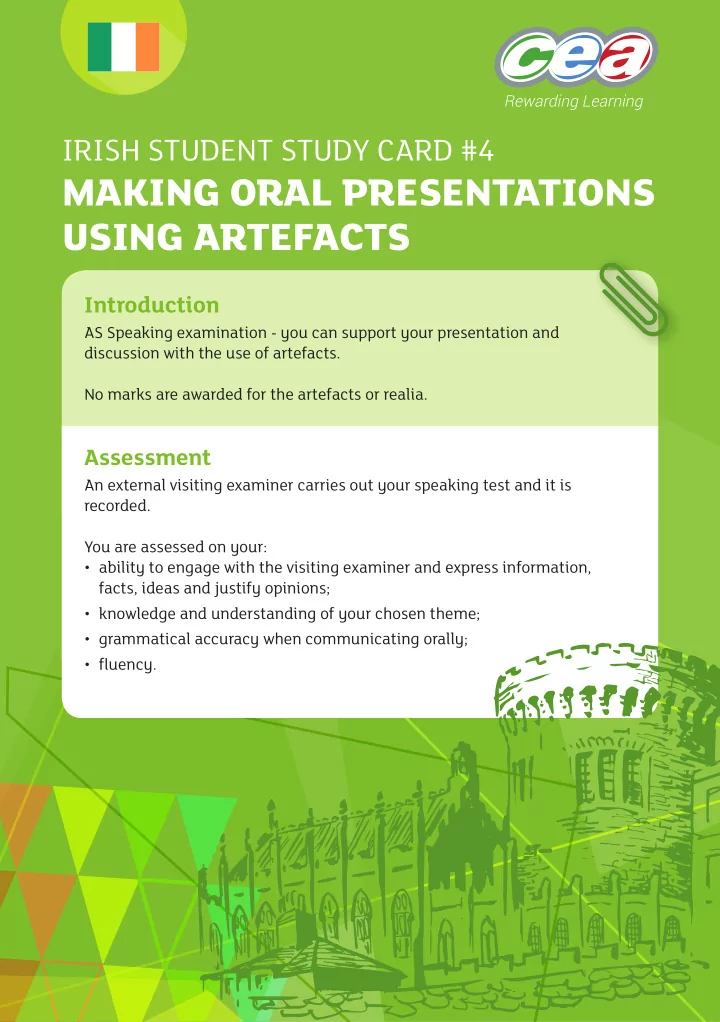

IRISH STUDENT STUDY CARD #4 MAKING ORAL PRESENTATIONS USING ARTEFACTS Introduction AS Speaking examination - you can support your presentation and discussion with the use of artefacts. No marks are awarded for the artefacts or realia. Assessment An external visiting examiner carries out your speaking test and it is recorded. You are assessed on your: • ability to engage with the visiting examiner and express information, facts, ideas and justify opinions; • knowledge and understanding of your chosen theme; • grammatical accuracy when communicating orally; • fmuency.
STUDENT STUDY CARD #4 IRISH Assessment Objective/s At AS, you will be assessed according to the following criterion: • AO4: Knowledge and understanding of the chosen topic relating to an Irish-speaking country or community. Skills Here are some suggestions to help you prepare for this skills area. What are artefacts? • In the context of your AS presentation and discussion, artefacts are objects which illustrate your chosen topic or aspects of your chosen. • Artefacts can be objects, photos, drawings, documents etc. If you borrow items of historical, sentimental or monetary value, please ask the owner’s permission. If your artefact is perishable, expensive or of sentimental value, discuss with your teacher beforehand, in order to comply with your school’s policies/procedures. • Artefacts can provide a very meaningful visual focus to any presentation and discussion. Preparation • Decide early on if you are going to use artefacts. This will give you time to select suitable materials and to practise delivering your AS presentation with the objects you have chosen. • Do not use too many objects to avoid being distracted from the main focus which is verbal communication. You will not be assessed on your choice of artefacts. • Think about the artefact(s). Why have you chosen it? What is its history? Who owns it? Why is it of signifjcance? Is it a unique/special object or is it widely available? How is/was it used? By whom and for what purpose? • The objects you bring with you should support and illustrate the points which you are making. Do not base your work on an artefact simply because you like the object. On the day of the examination • Your good preparation will pay off, and your carefully chosen artefact(s) will help you feel confjdent, so... don’t forget it/them.
STUDENT STUDY CARD #4 IRISH • When invited by the examiner, start delivering your AS presentation. • Remember that you are communicating with the examiner, not the object(s) that you have brought in! Refer to your artefact(s) to illustrate key aspects of the topic you have chosen. • Remember to take your support material with you when leaving the examination room.
Recommend
More recommend